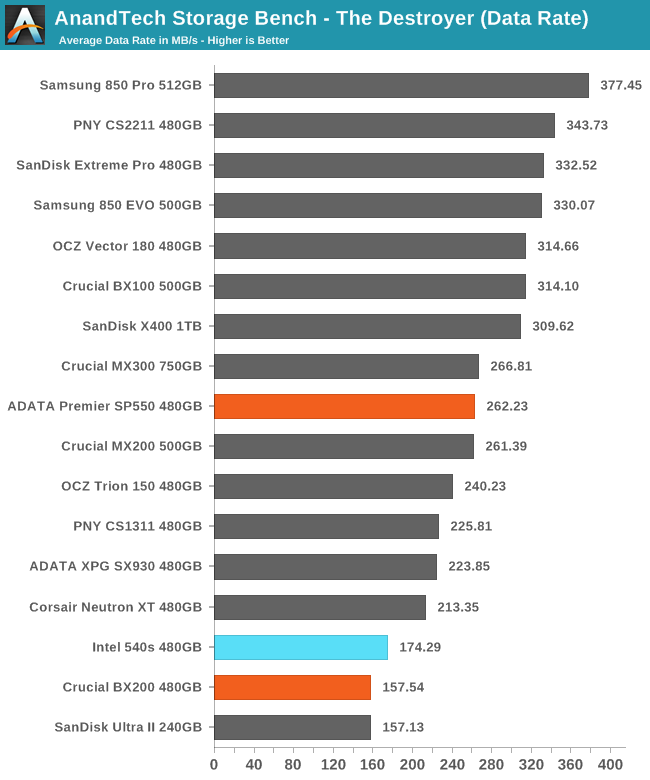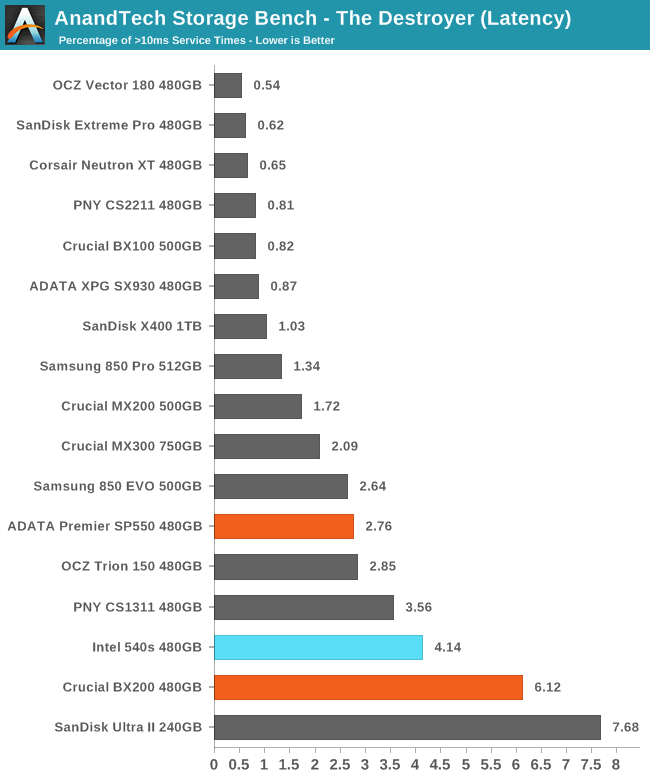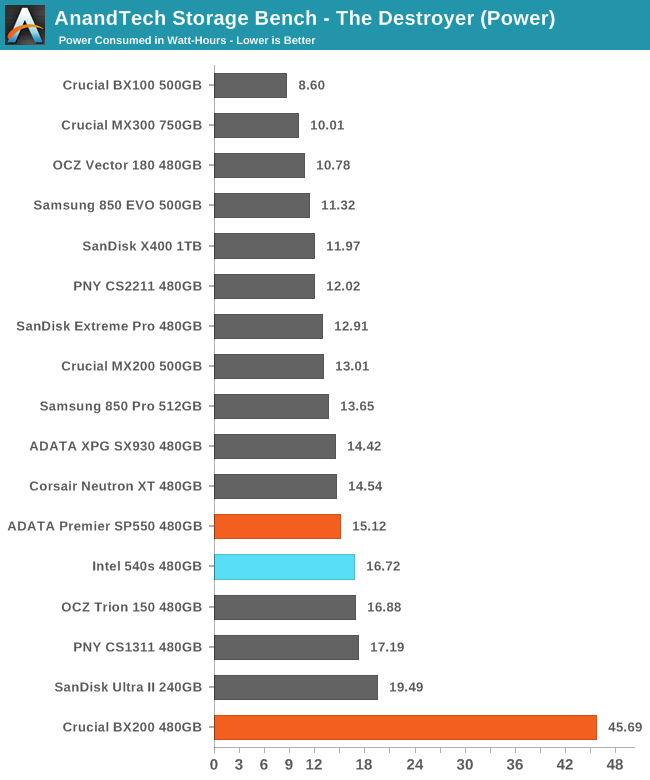The Intel SSD 540s (480GB) Review
by Billy Tallis on June 23, 2016 9:00 AM ESTAnandTech Storage Bench - The Destroyer
The Destroyer is an extremely long test replicating the access patterns of very IO-intensive desktop usage. A detailed breakdown can be found in this article. Like real-world usage and unlike our Iometer tests, the drives do get the occasional break that allows for some background garbage collection and flushing caches, but those idle times are limited to 25ms so that it doesn't take all week to run the test.
We quantify performance on this test by reporting the drive's average data throughput, a few data points about its latency, and the total energy used by the drive over the course of the test.

On The Destroyer, the ADATA SP550 was able to punch above its weight and perform on par with planar TLC drives of twice the capacity, while the Crucial BX200 performed below expectations. The Intel 540s unfortunately demonstrates more of the latter, with an average data rate that is not as bad as the BX200 but is still clearly outclassed by the Phison S10 TLC drives and the SP550.

As with the average data rate, the average service time of the 540s is poor but not quite as bad as the BX200. The SP550 didn't rank much higher on this metric, but in absolute terms it was significantly faster.


The frequency of latency outliers shows similar rankings, with the Intel 540s near the bottom of the chart and between the two SM2256 drives.

Power efficiency has regressed slightly compared to the SP550, but the Intel 540s clearly doesn't have anything horribly wrong going on the way the BX200 did.










77 Comments
View All Comments
Stuka87 - Thursday, June 23, 2016 - link
So disappointing. I bought up some Intel 740's because they were being discontinued. Glad I did now.prime2515103 - Thursday, June 23, 2016 - link
Did that BX200 really pull 45.69 watts in The Destroyer or is that a typo? How is that even possible?JoeMonco - Thursday, June 23, 2016 - link
The drive is broken garbage. That's how.Billy Tallis - Thursday, June 23, 2016 - link
That's Watt-hours. The Destroyer takes a typical SATA drive around 12 hours to run, so most drives are averaging a little over 1W.prime2515103 - Friday, June 24, 2016 - link
Oh I see... I'm going to have to read the testing methodology again, it's been awhile.cbjwthwm - Tuesday, June 28, 2016 - link
Did you do any re-testing of the drive with the firmware update 031C Intel released for it? It's too bad it can only be updated via ISO vs the Toolbox, and I found the ISO buggy (claimed it failed, but actually updated ok) which they have since pulled for "maintenance" ;)darkfalz - Friday, June 24, 2016 - link
Why does AT waste time reviewing a market segment where there is something like 5% noticeable difference across the board? And yet still haven't reviewed 10x0 series...vladx - Friday, June 24, 2016 - link
Guess the replacement for my Samsung 840 Evo is still going to be Sandisk X400. Intel's new SSD is a dissapointment.zodiacfml - Sunday, June 26, 2016 - link
Why? I guess, someone decided that the company should have a product at this price.fanofanand - Monday, June 27, 2016 - link
So Intel wants to charge the "Intel premium" while none of the components are Intel designed or made? Oh how the mighty have fallen. Between this drive, the $400 compute stick, and $1700 consumer CPUs, Intel is showing us just how out of touch they are with today's consumer markets.